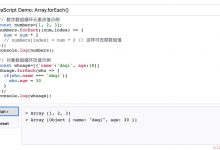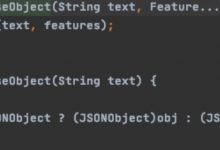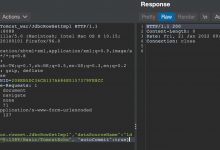前言
JavaScript 中最大的一个安全问题,也是最令人困惑的一个问题,就是在某些情况下
this
的值是如何确定的。有js基础的同学面对这个问题基本可以想到:
this
的指向和函数调用的方式相关。这当然是正确的,然而,这几种方式有什么联系吗?这是我接下来要说明的问题。
this
从哪里来
this
是js的一个关键字,和
arguments
类似,它是函数运行时,在函数体内部自动生成的一个对象,只能在函数体内部使用。这句话似乎与认知不同,我们在函数体外部即全局作用域下也能使用
this
。
// 直接在全局作用域下输出thisconsole.log(this);// 输出window
但是不要忘记,即便是全局作用域,依旧是运行在
window
下的,我们写的代码都在
window
的某个函数中。而这也催生了一种理解
this
指向的方法:
this
永远指向调用者(非箭头函数中)。
作为普通函数调用
函数作为普通函数直接调用(也称为自执行函数)的时候,无论函数在全局还是在另一个函数中,
this
都是指向
window
。
function fn() {this.author = \'Wango\';}fn();console.log(author);// Wango
这很好理解,但又不是很好理解,因为在代码中省略了
window
,补全后就好理解了:
this
指向的是调用者。
function fn() {this.author = \'Wango\';}window.fn();console.log(window.author);// Wango
而在内部函数中,自执行函数中的
this
依旧指向全局作用域,我们无法通过
window.foo()
调用函数,但并不妨碍我们先这样理解(具体参见本文最后一部分
this
的强制转型)。
function fn() {function foo() {console.log(this);}foo();// Windowwindow.foo();// TypeError}fn();
作为构造函数调用
在构造函数中,
this
指向
new
生成的新对象,即构造函数是通过
new
调用的,构造函数内部的
this
当然就应该指向
new
出来的对象。
function Person(name, age) {this.name = name;this.age = age;console.log(this);// Person { name: \'Wango\', age: 24 }}new Person(\'Wango\', 24);
构造函数中的
this
与构造函数的返回值类型无关,下列代码中
p
指向了构造函数返回的对象,而不是
new
出来的对象。当然,这是构造函数的特性,与本主题关系不大。
function Person(name, age) {console.log(this);// Person {}this.name = name;this.age = age;console.log(this);// Person { name: \'Wango\', age: 24 }return {name: \'Lily\',age: 25}}Person.prototype.sayName = function() {return this.name + \' \' + this.age}const p = new Person(\'Wango\', 24);console.log(p.sayName());// TypeError: p.sayName is not a function
作为对象方法调用
通过对象方法调用时,
this
指向应该是最明晰的了。与其他面向对象语言的
this
行为相同,指向该方法的调用者。
function Person(name, age) {this.name = name;this.age = age;}Person.prototype.sayName = fn;function fn() {return this.name + \' \' + this.age}const p = new Person(\'Wango\', 24);console.log(p);// Person { name: \'Wango\', age: 24 }console.log(p.sayName());// Wango 24
通过
[]
调用对象方法
通常,我们对于对象方法是通过
.
语法调用,但通过
[]
也可以调用对象方法,在这种情况下的
this
指向常常会被我们混淆、忽略。
function fn() {console.log(t56chis);}const arr = [fn, 1];arr[0]();// [Function: fn, 1]function fn2() {arguments[0]();}fn2(fn, 1);// [Arguments] { \'0\': [Function: fn], \'1\': 1 }
在上例中,无论是数组还是伪数组,其本质上都是对象,在通过
[]
获取函数元素并调用的时候,会改变函数中的
this
指向,
this
指向这个数组或伪数组,与对象调用函数的行为一致。
通过call、apply调用
function fn() {console.log(this.name);}const author = {name: \'Wango\'}fn.call(author);// Wango
这似乎与
this
永远指向调用者相违背,但一旦我们明白了call函数的实现机制就会明白,这不仅不是违背,反而是佐证。对
call
、
apply
、
bind
实现机制不熟悉的同学可以参考我另一篇文章,下面截取
call
简要说明。
// 保存一个全局变量作为默认值const root = this;Function.prototype.myCall = function(context, ...args) {if (typeof context === \'object\') {// 如果参数是null,使用全局变量context = context || rad8oot;} else {// 参数不是对象的创建一个空对象context = Object.create(null);}// 使用Symbol创建唯一值作为函数名let fn = Symbol();context[fn] = this;context[fn](...args);delete context[fn];}
call
函数最核心的实现在于
context[fn] = this;
和
context[fn](...args);
这两行。实际上就是将没有函数调用者的普通函数挂载到指定的对象上,这时
this
指向与对象调用方法的一致。而
delete context[fn];
是在调用后立即解除对象与函数之间的关联。
严格模式下的不同表现
this
强制转型
使用函数的
apply()
或
call()
方法时,在非严格模式下
null
或
undefined
值会被强制转型为全局对象。在严格模式下,则始终以指定值作为函数
this
的值,无论指定的是什么值。这也是为何在严格模式下,自执行函数的
this
不再指向
window
,而是指向
undefined
的根本原因。
// 定义一个全局变量color = \"red\";function displayColor() {console.log(this.color);}// 在非严格模式下使用call修改this指向,并指定null,或undefined,displayColor.call(null);displayColor.call();// red// 修改指向无效,传入null或undefined被转换为了window
实际上,我们也可以将自执行函数,如
fn()
,看作是
fn.call()
的语法糖,在普通模式下,第一个参数默认为
undefined
,但被强制转换为
window
。这也就解释了为何所有自执行函数中
this
都指向
window
但无法通过
window
调用的问题(函数在
call
函数中挂载到
window
对象上,执行后被立即删除,所以无法再次通过
window
访问)。
apply()
或
call()
方法在严格模式下传入简单数据类型作为第一个参数时,该简单数据类型会被转换为相应的包装类,而非严格模式不会如此转换。
function foo() {console.log(this);}foo.call(); // Window {}foo.call(2); // Number {2}function foo() {console.log(this);}foo.call(); // undefinedfoo.call(2); // 2
箭头函数的
this
指向
在箭头函数中,
this
引用的是定义箭头函56c数的上下文。即箭头函数中的
this
不会随着函数调用方式的改变而改变。
function Person(name) {this.name = name;this.getName = () => console.log(this.name);}const p = new Person(\'Wango\');p.getName();// Wangoconst getName = p.getName;getName();// WangogetName.call({name: \'Lily\'});// Wango
参考资料:
Javascript 的 this 用法
Javascript高级程序设计(第四版)
 爱站程序员基地
爱站程序员基地


